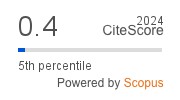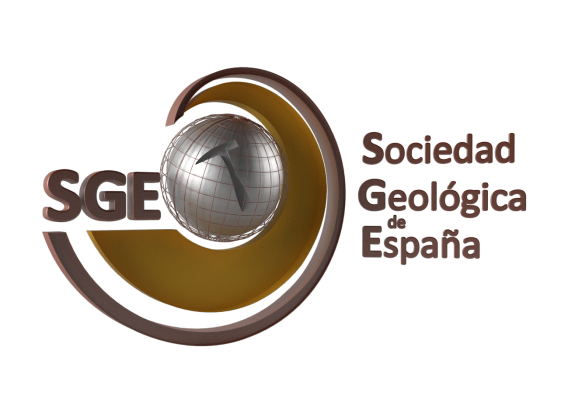Instructions for authors / Rules
1. PREPARATION OF THE MANUSCRIPT
The manuscript must be submitted through the link "Make a submission", but several files about the work to be submitted must be prepared beforehand.
The manuscript with figures and references cannot exceed four printed pages. For this reason, it should be prepared using the template provided for GEOGACETA papers, which can be downloaded from here: MANUSCRIPT template.
In this template it is necessary to fill in or complete, in Spanish or English, each and every one of the following fields, if otherwise not indicated:
- Title / Título: Brief and informative.
- Authors: Name and surname, full postal address and e-mail of all authors.
- Resumen and Abstract: The articles will include an "Abstract" in English and a Resumen in Spanish, both containing the same information, and should give a clear idea of the content and conclusions of the communication. The maximum length of the abstract should not exceed 200 words. The maximum length of the abstract should not exceed 200 words. References should not be included in the abstract/resume.
- Palabras clave and Keywords: A maximum of 5 key words in English (key words) and the same in Spanish (palabras clave).
- Main text: Its general structure will consist of an introduction/background section, summary presentation of data and results, discussion of these and conclusions. Tables and figures should be distributed coherently throughout the text, and always in accordance with the reference template.
- Author contributions: For articles with several authors, this section should indicate, after each author's surname, the tasks carried out by each author using some (or all) of the following activities or fields in which they contribute: Structure of the paper, methodology, data acquisition, editing, figures, revision of the manuscript, research/analysis, coordination, supervision.
- Acknowledgements: First of all, in this section, express reference should be made to the sources of funding: "The present work has been funded by the projects REFERENCE, REFERENCE, of... (indicate funding institution), by the grant (indicate institution and beneficiary author)". If no funding has been received, a sentence of the following type should be included: The present research has not received specific support from public sector agencies, commercial sector or non-profit entities. In addition, the Editorial Board and the GEOGACETA Advisory Board suggest that thanks to the identified or anonymous reviewers should be expressly mentioned in this section. If artificial intelligence tools have been used in any of the permitted ways described in the journal’s policy (see below), their use and exact purpose must also be explicitly stated in this section.
- Supplementary material (OPTIONAL): This section should be included only when the manuscript incorporates supplementary material. In such cases, the following text must be added to the section: “The supplementary material associated with this manuscript is available for download on the journal's website, accessible via the DOI indicated on the first page.”
- References: References should be listed in alphabetical order of authors (maximum 20 references). For papers headed by the same author, the following order will be followed: firstly, papers signed by a single author and arranged in chronological order; secondly, papers signed by 2 authors and arranged firstly in alphabetical order and, in the case of publications with the same two co-authors, in chronological order; finally, papers signed by 3 or more authors arranged in chronological order. In each of the references, the title of the work should be omitted in the case of articles in journals or in books of proceedings and communications from meetings and congresses.
Important: References that have a DOI, the DOI should be indicated with a link under each reference: https://doi.org/.... To search for the DOI of a paper you can use the following Crossref website.
If the paper is longer than 4 pages it is convenient to abbreviate the DOI address. To generate an abbreviated DOI address, you can do it in the following Web (shortdoi.org)
See the following examples:
Aldaya, F., Martínez-García, E., Díaz de Federico, A., García Dueñas, V. y Navarro-Vilá, F. (1978). Mapa Geológico de España 1:50.000, hoja nº 1042 (Lanjarón) y memoria. IGME. 65 p.
Balanyá Roure, J.C. (1991). Estructura del Dominio de Alborán en la parte norte del Arco de Gibraltar. Tesis Doctoral, Univ. de Granada, 210 p.
Díaz Martínez, E. (1988). En: II Congreso Geológico de España. Comunicaciones 1, 67-70.
Díaz Molina, M. y Tortosa, A. (1996). En: Tertiary basins of Spain (P. Friend y C. Dabrio, Eds.). Cambrigde University Press, Cambridge, 292-299.
Font, E., Martínez-Solares, J.M., Massana, E. y Santanach, P. (2010). Revista de la Sociedad Geológica de España 23, 69-80.
García-Navarro, E. y Fernández, C. (2010). Journal of Structural Geology, 32, 693-702. https://doi.org/10.1016/j.jsg.2010.04.004
Martínez Catalán, J.R. (2011). Geogaceta 50, 7-10.
Schumm, S.A. (1977). The fluvial system. John Wiley and Sons, New York, 338 p.
Zhang, X.Y., Wang, W.Q., Yuan, D.X., Zhang, H., Zheng, Q.F. (2019). Palaeoworld 29, 126-136. https://doi.org/10.1016/j.palwor.2019.05.009.
Or with shorter DOI:
Zhang, X.Y., Wang, W.Q., Yuan, D.X., Zhang, H., Zheng, Q.F. (2019). Palaeoworld 29, 126-136. https://doi.org/hjpr
- Tables:
Tables should be arranged in correlative order with Roman numerals. Authors must ensure that they are legible once they have been inserted in the reference template. They should preferably be included in the text as JPG images.
- Figures and photographs:
They will be counted together and numbered consecutively with Arabic numerals. All maps, figures and photographs should include a graphic scale. Authors must ensure the legibility of each of the figures inserted in the reference template. The design of the figures must take into account the maximum box size of the GEOGACETA pages (240 x 175 mm), which in turn is subdivided into three columns. It is important to choose the correct line thicknesses, label sizes, hatching, etc., in order to achieve optimum quality. The recommended fonts and sizes for the figures are indicated in the template. If a figure is in turn composed of other figures and/or photographs, each of them must be named with a capital letter, starting with the letter A and following letters in alphabetical order.
- Footnotes of tables, figures and photographs. They must be presented in Spanish and English, as indicated in the reference template.
Use of artificial intelligence (AI) tools
GEOGACETA does not accept the exclusive authorship of AI tools at any stage of the writing, editing, review, publication, or content-reuse process. The use of AI is permitted only under the following circumstances: 1) assistance in content generation, always under the direct supervision of the authors, in which the AI must not replace human authorship, but may serve as support to improve the quality and efficiency of the writing process; 2) style, grammar, and coherence correction, as well as plagiarism detection, with the final editing remaining the responsibility of the authors, who must ensure the accuracy and quality of the text; 3) content reuse, such as producing summaries or translating articles, provided that copyright and the integrity of the original content are respected. However, in all cases where AI tools are used, their use and exact nature of application must be explicitly declared in the Acknowledgements section.
Publication in colour
It is possible to publish all pages of the manuscript in colour (no single pages). Once the authors have received the "favourable report" of their work, they will be sent a document to request the colour printing of the figures and to pay the corresponding amount (200 € per article). Payment will be handled directly with the printer during the process of correcting the "proofs". It is also possible to include double or fold-out pages (DIN A3), the additional cost of which will also be assumed by the authors. In these cases it will be essential to contact the Editors beforehand.
- MANUSCRIPT SUBMISSION (FILES AND DOCUMENTS)
To submit manuscripts, the contact author or the corresponding author, if there are several people signing the paper, must register on the GEOGACETA website, or log in if he/she is already registered. Once you have logged in, you must follow the instructions indicated in the Manuscript Submission Guide, which can be found on the GEOGACETA website. You must complete all the requested data (including metadata) before finalizing the manuscript submission. Failure to do so correctly may result in the manuscript being rejected by the Editors for resubmission, so that you can fill in all the data correctly.
- EDITORIAL POLICY
- Important Requirement: Papers must be signed by a member of the Geological Society of Spain and will be presented at a Scientific Session by one of the signatories of the paper. Each member of the Society can sign a maximum of three papers for each Scientific Session, and those who are not members of the Society can only sign one paper.
- In the submission, authors will be asked to declare that the data presented are original and have not been previously published. Authors should propose five scientific reviewers, indicating for each one of them: name and surname, institutional affiliation, e-mail and a brief justification of the choice. The submission of the manuscript, for acceptance, should follow the publication guidelines contained in these Instructions for Authors.
- It is important to follow the good practice guidelines, which can be consulted on the GEOGACETA website.
- Peer review: The Editors of GEOGACETA will manage the review of the manuscripts received. First, each article received is reviewed by the Editors, who check whether the article is original and unpublished and its contents are in accordance with the editorial line of GEOGACETA, whether the work has a minimum scientific structure and whether it complies with the journal's publication guidelines.
Each manuscript will be reviewed by at least two reviewers -initially anonymous, unless they wish to identify themselves- who will be specialists in the field. The Editors will rely, if necessary, on the members of the Scientific Committee for advice or revision.
For more details on the peer review process and on the presentation of papers in the Scientific Sessions, please consult the website, in the section "About the journal".
- Information on the copyright policy is available in the "About the journal" section, and detailed information on authors' rights is available in the "Submissions" section.
- COMPOSITION OF ARTICLES FOR PUBLICATION IN GEOGACETA
Once the papers have been presented at a Scientific Session of the SGE, the authors will later receive a proof for correction through the GEOGACETA website (RECYT platform), as explained in the Guide to submitting manuscripts. Only formal modifications to the proofs will be accepted. Authors must return the proofs within seven days.
Articles may be published in color. When the authors have the "preliminary acceptance" of their work, a document will be sent to them to request the color printing of the figures and to assume the corresponding amount (200 € per article). Payment will be managed and paid directly during the process of correcting the "proofs". Once all the papers have been reviewed, the issue of GEOGACETA corresponding to the Scientific Session where the papers will be presented will be edited. It will first be published on the journal's website and on the SGE website, and then it will be published in the printed version for distribution under the CC BY-NC-SA 4.0 License.
For more details, see the information "About the journal” in the Website.








